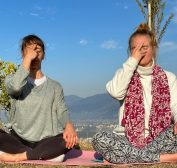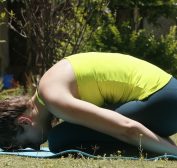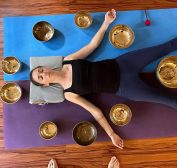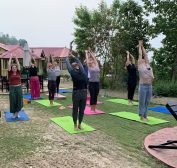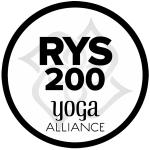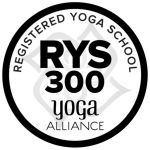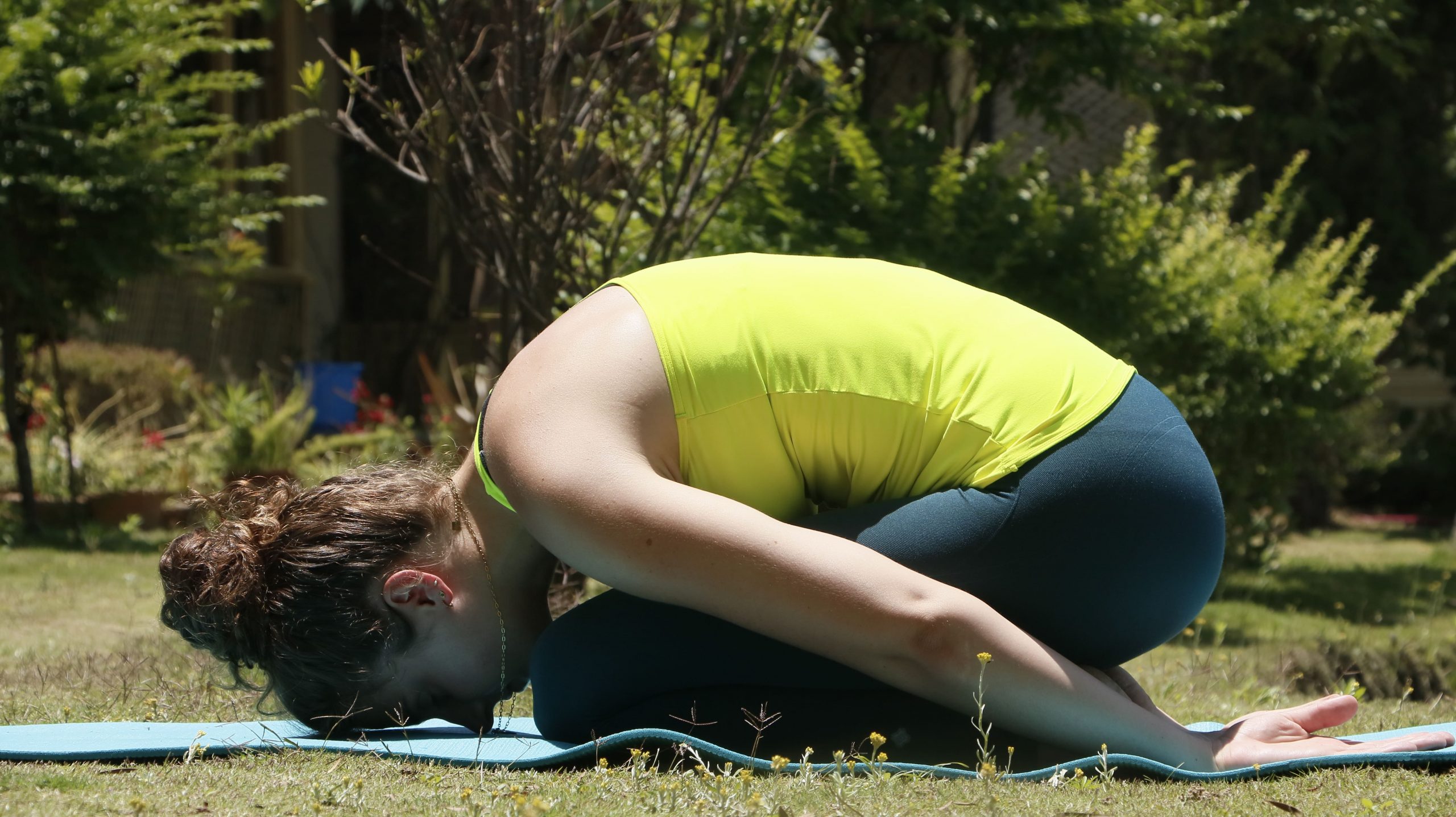
Stress has become an inevitable part of daily life among people of every age group. The unhealthy way of living such as the food, working patterns, and the ambiance that you live in can cause stress in your mind and body.
Hence, it is important to plan activities to rejuvenate yourself once in a while. Such activities help to loosen your muscles and refresh your mind.

Yoga can be also a useful tool for managing stress. The combination of physical postures, controlled breathing, and mindfulness can help to relax the body and calm the mind. The benefits of yoga are maximized if you follow a yogic diet along with yogic exercises.
Benefits of Yoga in Stress Management
A number of research studies have proved that yoga can help in reducing stress and anxiety and give one a feeling of serenity. All different kinds of yoga poses can be beneficial in releasing stress from different parts of the body.
Overall, yoga can enhance one’s mood and complete sense of well-being. However, it’s important to remember that everyone’s experience with yoga is unique and results may vary.
As with any stress management technique, it’s important to be consistent and make yoga a regular part of your routine for optimal benefits. It is suggested to visit yoga retreats once in while during your holidays to make your life more relaxed.
Some of the benefits of stress management are outlined below:
1. Physical relaxation
If you incorporate yoga into your list of daily activities, it can help you relax from physical stress. The combination of physical postures, controlled breathing, and meditation can help to relax the body and relieve physical tension.
The physical postures, or asanas, in yoga are designed to stretch and strengthen the muscles, which can help to release physical tension and promote relaxation.
2. Mental Relaxation
By focusing on the present moment and letting go of distracting thoughts, yoga can help to calm the mind and reduce feelings of stress and anxiety.
3. Improved Breathing
Controlled breathing exercises in yoga can help to regulate the respiratory system and improve overall respiratory function. This practice also has a calming effect on the mind and body.
By taking control of one’s breathing, individuals can feel more in control of their stress levels, promoting feelings of empowerment and well-being.
4. Increased mindfulness
Practicing yoga regularly can help to develop mindfulness and awareness of one’s thoughts and physical sensations. Such yoga poses are helpful in promoting a greater sense of relaxation and well-being.
Regular yoga practice can help to develop mindfulness and awareness of one’s thoughts and physical sensations. This increased self-awareness can help individuals to recognize when they are experiencing stress and take steps to manage it more effectively.
5. Improved sleep
An unmanaged pattern of rest and lack of sound sleep is often major cause of stress. Yoga can help to improve sleep quality and reduce symptoms of insomnia by promoting physical and mental relaxation.
6. Improved immune function
Research has shown that yoga can help to improve immune function, which can be particularly beneficial for individuals who are prone to stress-related illnesses.
7. Increased sense of control
By taking control of one’s breathing and physical sensations, yoga can help individuals to feel more in control of their stress levels, promoting feelings of empowerment and well-being.
In conclusion, by promoting physical and mental relaxation, yoga can help to improve overall health and well-being, which can have a positive impact on stress levels. Additionally, research has shown that yoga can help to improve immune function, reduce symptoms of depression and anxiety, and promote better sleep, all of which can contribute to reducing stress.
However, it is important to approach yoga with caution and listen to your body, only doing what feels comfortable and avoiding any poses that cause pain.
Yoga Poses For Stress Relief
There are several poses in yoga that precisely releases the stress of every single corner of the body. Some of these poses are described below:
1. Ananda Balasana
This yoga poses is also called the happy baby pose. In this pose, you lay on your back, holding out your outward protruded legs with your hands. The legs are slightly folded at the knees and it also involves your chest and back.
It is a great stretch to your inner thighs, inner groins, hamstrings, and hips. This pose helps to release tension in the hips and lower back, promoting feelings of calm and relaxation.
Another similar yoga pose that strengthens legs and hips is Virabhadrasana II.
2. Adho Mukha Savasana
The downward dog that is adho mukh savasana yoga pose helps to stretch the muscles of the legs and spine, reducing feelings of stress and anxiety.
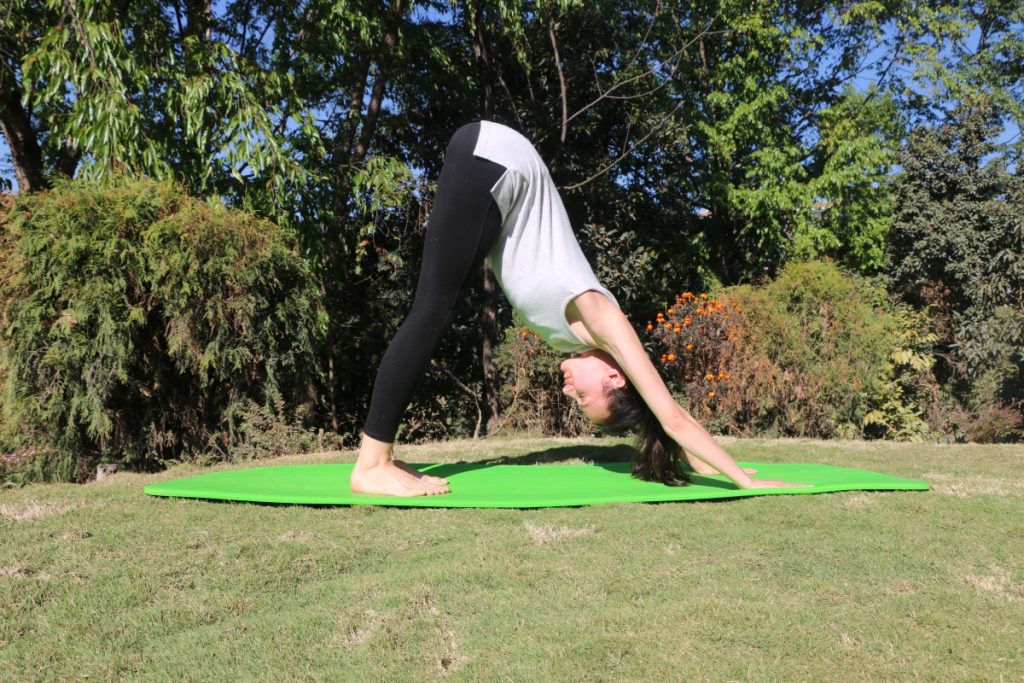
In this pose, you bend your body in a V-shape facing the ground with your legs and hands spread and resting on the ground.
3. Viparita Karani
In this asana, you stretch your legs up and rest them with the support of the wall with your hands placed beneath your hips. It is also called the legs up the wall pose or inverted lake pose.
The asana passively stretches your gluteus maximus and opens your chest. This pose can help to reduce stress and fatigue by reversing the effects of gravity on the body.
4. Bhujangasana
Bhujangasana, which is also called Cobra Pose, helps to strengthen the muscles of the back and chest while also helping to calm the mind and reduce stress.

In this asana, you recline your back while facing your head back and upwards.
Besides, this asana is also known to improve blood circulation and strengthen your spine while toning your abdomen.
5. Paschimottasana
The seated forward bend which is also termed Paschimottasana, pose helps to stretch the hamstrings and lower back, promoting relaxation and reducing feelings of stress and anxiety.

It also benefits spine mobility and overall flexibility.
6. Savasana
This final resting pose is an important part of any yoga practice, helping to release tension in the body and calm the mind. It is also called the Corpse pose as you lay straight on your back and stay still.
Though this pose looks simple, it takes a lot of art and patience to be able to relax in this simplest form of yoga.
7. Garudasana
Garudasana is also called the eagle pose as it represents the posture of the eagle bird. This pose helps to release tension in the neck, shoulders, and back while also improving balance and concentration.
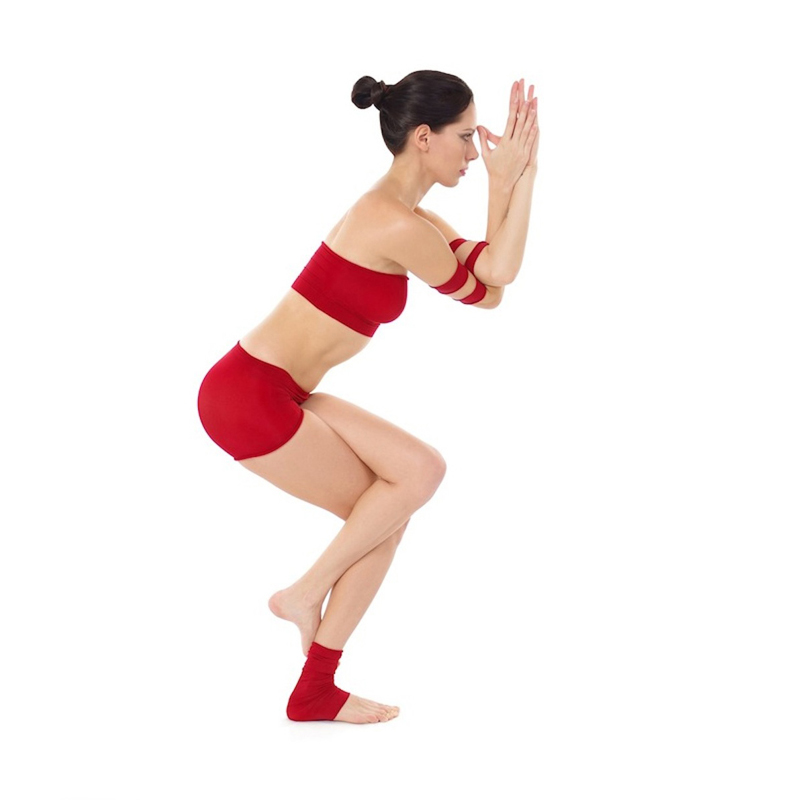
This asana requires you to stand on one leg, cross the other leg over it, and crisscross the arms one over another while pressing the palms together. It requires you to balance your balance while stressing your legs.
The asana helps to alleviate sciatica and rheumatism.
8. Cat-Cow Stretch
Marjaryasana-Bitilasana which is also called cat-cow stretch focuses on the hips, back, abdomen, and chest. This gentle flowing movement helps to release tension in the spine and neck, promoting relaxation and stress relief.
People barely consider this, but yoga is much more than just stretching. It involves perfect coordination of body, mind, and soul for one to successfully perform a yoga pose. Thus, incorporating yoga into your set of daily activities can help you release stress from your body and mind and enhance your performance.
Besides, there are certain yoga poses that have been proven to be effective in alleviating certain diseases such as rheumatoid, digestion-related issues and respiratory problems.




